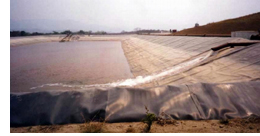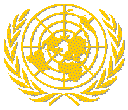Cyanide & Gold:
Is a US Mining Company Poisoning the People of Honduras?
Jesse Barnes, MIT '02 (Eloranta Fellow, Summer 2002)
Daniel Moss (Grassroots International)
7 p.m., Monday, December 2, 2002
in MIT Room 4-237
This event is co-sponsored with the MIT History Faculty. It is
part of our "It's Our Planet" series, in which members of the MIT
community report on research, activism, or volunteer work they have done across the hemisphere.
 After graduating from MIT this year, JESSE BARNES spent
the summer in the village of El Porvenir, in Honduras. El
Porvenir is across a river from one of the largest gold mines
in Honduras, owned by a US mining company. To retrieve gold
cheaply and profitably, the company uses cyanide solution
to leach the precious metal out of the ore. Is this form
of mining poisoning the people and the environment? Jesse's
project aims to find out; and to empower the people of El
Porvenir so that they can continue to monitor the quality of
their environment. Commenting on Jesse's presentation will be
DANIEL MOSS, Development Director at Grassroots International
and former Program Officer for Latin America at Oxfam. Also an
MIT alumnus, Daniel has helped to organize communities in
Peru, El Salvador, the United States, and elsewhere. He will
discuss Jesse's project in the context of what various
international agencies & development NGOs do in Latin America.
After graduating from MIT this year, JESSE BARNES spent
the summer in the village of El Porvenir, in Honduras. El
Porvenir is across a river from one of the largest gold mines
in Honduras, owned by a US mining company. To retrieve gold
cheaply and profitably, the company uses cyanide solution
to leach the precious metal out of the ore. Is this form
of mining poisoning the people and the environment? Jesse's
project aims to find out; and to empower the people of El
Porvenir so that they can continue to monitor the quality of
their environment. Commenting on Jesse's presentation will be
DANIEL MOSS, Development Director at Grassroots International
and former Program Officer for Latin America at Oxfam. Also an
MIT alumnus, Daniel has helped to organize communities in
Peru, El Salvador, the United States, and elsewhere. He will
discuss Jesse's project in the context of what various
international agencies & development NGOs do in Latin America.

For more information:
An article by Robert McClure and Andrew Schneider observes that while cyanide
is not new to the mining business, it is being used more aggressively than ever before:
The leaching technique was used in small measure by miners
in the early 1900s to draw gold and copper out of ore so low
in mineral content that large-scale operators would have
tossed it out as waste.
In the old days, leaching was done by misting cyanide over a
barrel or large vat filled with crushed ore. The cyanide
dissolved microscopic specks of gold from the rock, much as
water dissolves sugar. As gold soared to $850 an ounce in
the early 1980s, mining companies brought back the leaching
technique in a big way, wringing more gold from long-closed
mines and developing new ones where the ore had been
considered too poor to bother.
Miners still mix cyanide and water and slowly trickle it
over piles of ore, but the piles are much bigger. Now they
blast away entire mountains of rock, pile the ore in heaps
the size of a football field and apply a river of cyanide,
leaving behind hills of tailings and waste rock.
Environmentalists cringe at the technique, not just because
of the hazard of an accidental cyanide release, but also
because of a long-term risk related to exposure of rock to
the weather. The ore is often high in sulfides, and water
passing through the rock and soil creates sulfuric acid,
which in turn leaches poisonous heavy metals into runoff
water, with iron in the rock turning streams an orange-red.
The article appeared in the Seattle Post-Intelligencer (June 11, 2001).
McGraw-Hill's Integrative Biology Glossary
defines heap-leach extraction as "[a] technique for separating gold from extremely low-grade ores. Crushed ore
is piled in huge heaps and sprayed with a dilute alkaline-cyanide solution, which percolates through the pile
to extract the gold, which is separated from the effluent in a processing plant. This process has a high
potential for water pollution."
The Mineral Policy Center reports
that the use of heap-leach mining has caused environmental damage and harmed human health.
Rocky Ledge Mining Supply agrees:
Cyanide is extremely dangerous to site personnel and the environment. It is an archaic methodology
that has no place in today's world now that there is a better solution.
The company markets a non-cyanide alternative for which it claims a gold-recovery rate that is
higher than that of the usual cyanide leach.
Glamis Gold, Ltd., based in Reno, Nevada, is the owner
of the San Martín gold mine near El Porvenir, where the cyanide heap-leach process is employed.
The Earth Island Institute reports
on another Glamis mining project (in California):
The Glamis Imperial Mine, proposed by Glamis Gold, Ltd.
(trading symbol GLG) six years ago, would be a massive
open-pit cyanide heap-leach gold mine located in the heart
of an area now withdrawn from future mining claims. This
area is adjacent to designated wilderness, critical habitat
for the desert tortoise and an area of critical
environmental concern for Native American cultural values.
The proposed mine has drawn substantial opposition from
Native American tribes, labor groups, environmental
organizations, academia and experts in religion, economics,
the National Historic Preservation Act and water rights.
The Center for Economic & Social Rights tracks the
gold-mining industry in Honduras:
Extraction industries pose a serious threat to the
environment and human health, especially in less developed
countries that [desperately] need foreign exchange. In the
last five years, the Honduran government has quietly granted
mining companies 350 licenses to exploit over 30% of
national territory. CESR has worked with Honduran community
groups to document the human rights effects of gold mining
and have submitted a joint report to the UN Committee on
Economic, Social and Cultural Rights asking the Committee to
ensure that the rights of affected communities are protected
from unregulated mining companies.
The Center's full report is available.
In May, 2001, the United Nations Committee on Economic, Social and Cultural Rights
has noted its concern and made recommendations:
23. The Committee is concerned about the occurrence
of forced evictions, especially among peasants and
indigenous populations and in the areas where mining
activities are conducted, without adequate
compensation or appropriate relocation measures.
[…]
 38. The Committee strongly urges the State party to
adopt and implement legislative and other measures
to protect workers from the occupational health
hazards resulting from the use of toxic substances —
such as pesticides and cyanide — in the
banana-growing and gold-mining industries.
38. The Committee strongly urges the State party to
adopt and implement legislative and other measures
to protect workers from the occupational health
hazards resulting from the use of toxic substances —
such as pesticides and cyanide — in the
banana-growing and gold-mining industries.
[…]
45. Given that mining concessions may have a
significant impact on the enjoyment of article12 and
other provisions of the Covenant, the Committee
recommends that applications for mining concessions
be publicized in all the localities where the mining
will take place, and that opposition to such
applications be allowed within three months (not 15
days) of their publication in the relevant locality,
in accordance with principles of procedural
fairness.
46. The Committee urges the State party to adopt
immediate measures to counter the negative
environmental and health impacts of the use of
pollutants and toxic substances in specific
agricultural and industrial sectors, such as banana
growing and gold mining. In this regard, the
Committee recommends that the State party establish
a mechanism by which it can review effectively the
environmental impact studies conducted by or on
behalf of these sectors.
At MIT, other students are working to help ensure clean water in developing countries:
MIT graduating students who did clean water projects in Nicaragua and Nepal took the
top prizes … in MIT's first IDEAS Design Competition for "original innovative
designs that serve a wider community need." A team headed by Rebecca Hwang, a senior
in chemical engineering from Buenos Aires, Argentina, won the $5,000 first prize for her
project on colloidal silver ceramic filters in Nicaragua.
A full report
is available in MIT's Tech Talk (May 22, 2002).
|

